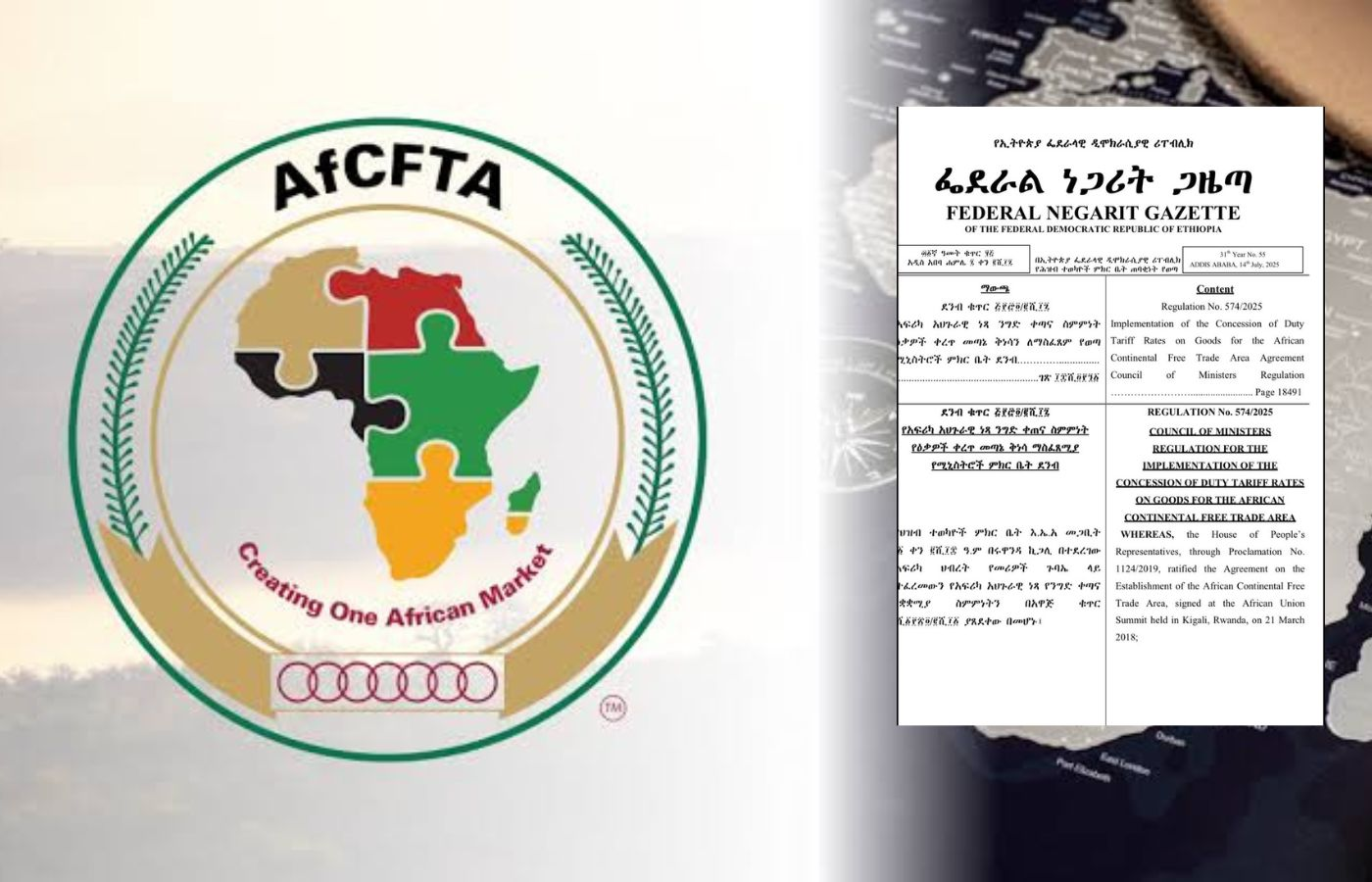Ethiopia is quietly making history. With a simple government publication, its Provisional Schedule of Tariff Concessions (PSTCs), the country finally unlocked the gates to trade under the African Continental Free Trade Area (AfCFTA).
At first glance, this might sound like dry policy. But in reality, this moment could transform the lives of farmers, traders, and entrepreneurs across Ethiopia. Why? Because it means lower tariffs, bigger markets, and a chance to sell “Made in Ethiopia” products across Africa like never before.

What is AfCFTA in Simple Terms?
AfCFTA is a bold African dream to create one big market where goods can move freely across the continent with fewer taxes at the border. Imagine 54 African countries trading with each other as easily as towns trade within one nation.
For Ethiopia, joining AfCFTA means local businesses can now reach a market of 1.3 billion people with a combined economy of over $3 trillion. That’s bigger than the European Union.
A Farmer’s Coffee, A Trader’s Fabrics
Let’s put this into perspective.
Abebe the coffee farmer in Sidama grows some of the best beans in the world. Until now, selling roasted coffee to West Africa was tough. Ghana, for example, could charge up to 20% import tax on his coffee. That made it more expensive for Ghanaian consumers and harder for Abebe to compete with cheaper, imported brands.
But under AfCFTA, those taxes shrink. Suddenly, Abebe’s coffee can reach Ghanaian supermarkets at a fair price. His beans aren’t just Ethiopian anymore; they’re African.
Now consider Amina, a textile trader in Tanzania. She’s long wanted to expand her business into Ethiopia, but import duties made her fabrics costly in Addis Ababa. Starting next month, Ethiopia’s tariff concessions will ease those costs. That means more Ethiopian buyers for Amina’s textiles and more choice for Ethiopian shoppers.
Why This Matters for Ethiopia
Here’s what Ethiopia gains:
- Exporters win: Farmers, manufacturers, and artisans get access to new customers across Africa without prohibitive costs.
- Importers benefit: Local industries can source raw materials and inputs more affordably, boosting productivity.
- Consumers gain: From Tanzanian fabrics to Kenyan electronics, shoppers enjoy more options, often at lower prices.
This isn’t just about economics. It’s about building a connected Africa where trade fuels opportunity, jobs, and growth.
The Bigger Picture: Africa Trading with Africa
When Ethiopia ratified AfCFTA back in 2019, the promise felt far away. Now, with the legal process complete, the country is ready to stand shoulder-to-shoulder with 22 others already trading under the pact.
For Africa, this is a powerful step. The more countries trade with each other, the less dependent they are on imports from outside the continent. And the more African-made products circulate, the stronger African industries become.
The Inspiration: From Local to Continental
For the Ethiopian farmer, the small business owner, or the budding entrepreneur, this new era is an invitation. It says: “Your market is no longer just your city or your country. Your market is Africa.”
And for everyday people, it means that a shirt from Tanzania, shea butter from Ghana, or leather shoes from Ethiopia can travel across borders more freely — connecting cultures through commerce.
A New Dawn
Ethiopia’s official entry into AfCFTA isn’t only a trade story; it’s a people’s story. It’s the story of African resilience, ambition, and the belief that when Africa trades with Africa, everyone wins.
This is more than a policy milestone. It’s the start of a new trade era, one where dreams in Sidama, Addis Ababa, or Dar es Salaam can grow beyond borders and touch the whole continent.
Note: The farmer character in this story is fictional to portray potential trade benefits in the region